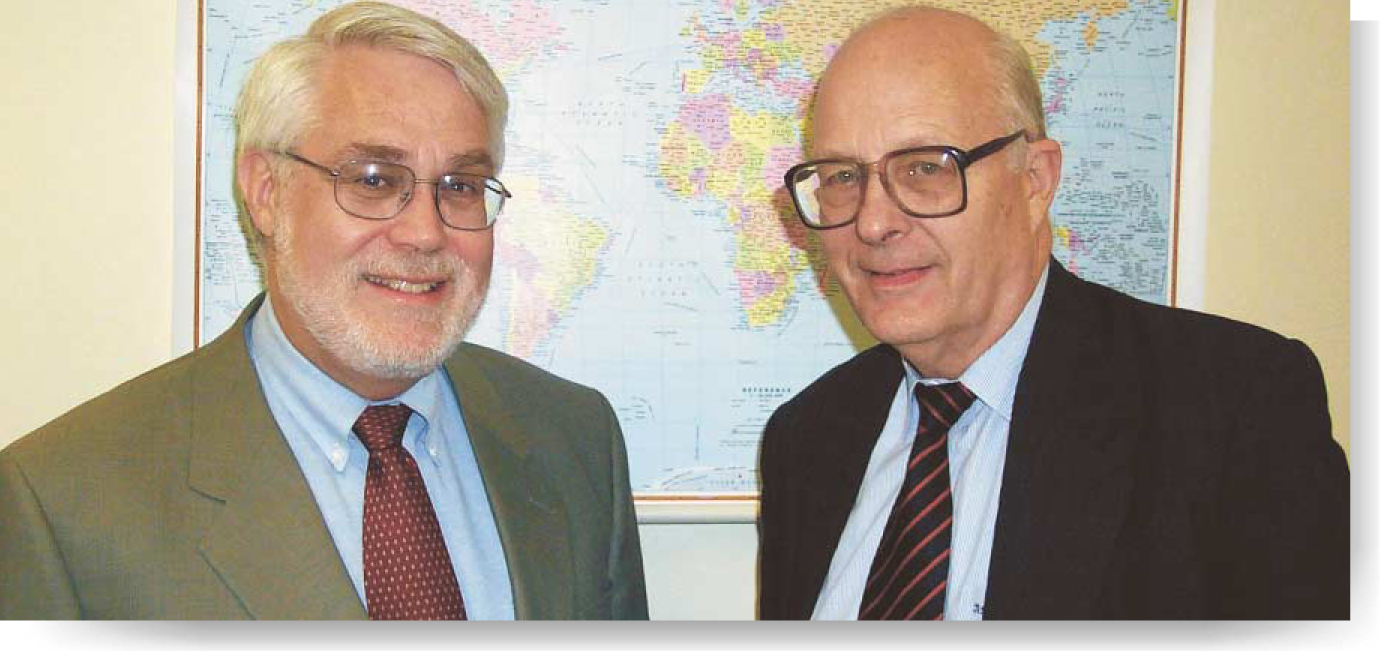Atkinson Arrives as State Department Science Adviser
DOI: 10.1063/1.1620828
State Department science adviser Norman Neureiter is stepping down in mid-September and will be succeeded by George Atkinson, a University of Arizona chemist.
“This was a three-year appointment and my term is up,” Neureiter said. “I’ve invested a lot of energy and commitment into this job and a key part of my legacy was assuring that the position be passed on and become institutionalized.” With the appointment of Atkinson, Neureiter said, “we’ve succeeded in doing that.”
Atkinson, who became the first American Institute of Physics fellow at the State Department two years ago, said he was attracted to the science adviser position because of “the foundation that Norm and his staff have created. They’ve put us in a position where science is recognized as important within the department.”
That wasn’t the case when Neureiter first took the job on the heels of a 1999 report by the National Research Council—an agency of the National Academy of Sciences—that was critical of the decade-long decline in scientific literacy within the State Department (see Physics Today, November 2000, page 44
“Norm has put an enormous amount of energy into the job, 60 to 80 hours a week, and he’s gotten an excellent degree of exposure and visibility,” said John Boright, the executive director of the NAS office of international affairs. Neureiter spent more time than NRC officials anticipated working on “operational issues,” such as ITER, the international thermonuclear experimental reactor project, “but the areas where he was investing his efforts were important,” Boright said.
The decision to continue the science adviser position came after an internal evaluation of Neureiter’s impact. While he is pleased that the position is being institutionalized, Neureiter said neither he nor Atkinson can take the reemergence of science in the department as a done deal. “Eternal vigilance is the price of survival,” he said.
“It’s like pushing a ball uphill,” Atkinson added. “We’ve reached the point where the gradient isn’t as steep as it was, but that doesn’t mean there still isn’t a gradient and the ball can roll back down the hill.”
During his fellowship, Atkinson worked in several State Department bureaus and traveled to a host of embassies in an effort to bring together an international mix of policymakers and scientists to look at key science issues.
His goals are to continue Neureiter’s successful efforts to increase the number of fellowships and internships that bring scientists into the department. He also hopes to bring more senior scientists into the department and its embassies; each would spend a year working on international policy issues that are influenced by science. “That is a way to build the credibility of the science community [within the department],” he said. “You want scientists working one-on-one with the policymakers, so a government person responsible for policy can turn to someone they know and trust in the science community for credible input.”
Neureiter said he intends to stay in Washington, DC, and work as a consultant on the role of science in international relations. “I’m not going to work on a 24/7 basis anymore,” he said. “Maybe a 12/7 basis.”

Atkinson Neureiter
JIM DAWSON

More about the Authors
Jim Dawson. American Center for Physics, One Physics Ellipse, College Park, Maryland 20740-3842, US .
